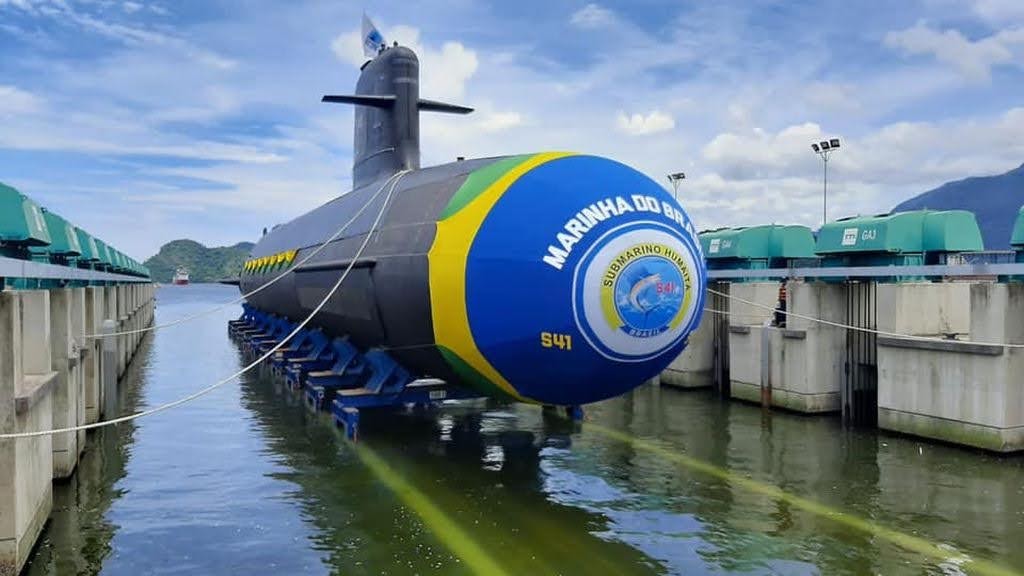The second of the four Riachuelo class submarines under construction for the Brazilian Navy (MB), within the Submarine Development Program (Prosub) framework, has begun acceptance tests at the dock and sea.
According to the MB’s Nuclear and Technological Development Directorate, yesterday morning, August 31, the Humaitá performed its operational flotation, a safety milestone that marks the beginning of the last phase of the construction project, executed by the company Itaguaí Construções Navais (ICN).
The testing of the submarine’s safety and operational systems will continue according to an extensive schedule until its definitive transfer to the Navy, to finally start its operational cycle in the Brazilian fleet.

According to the MB, the activities related to the remaining vessels of the Prosub: Tonelero (S42), Angostura (S43), and the future first Brazilian nuclear submarine Álvaro Alberto are developing according to schedule and are progressing in different stages of construction.
RIACHUELO’S INCORPORATION
On September 1, the Brazilian Navy will hold the induction ceremony for the Riachuelo submarine, the first vessel of the Prosub and the namesake of the class, after having recently signed the provisional acceptance agreement for the vessel.
The Prosub’s four conventionally powered submarines are larger than the Scorpène models acquired by the Chilean, Malaysian, and Indian Navies.
The Scorpène class, developed by Naval Group, is a diesel-electric attack submarine that can be optionally equipped with the Mesma (Module d’Energie Sous-Marine Autonome) air-independent propulsion (AIP) system, which uses ethanol and oxygen to power a steam turbine.
If the customer wants to integrate this technology into its submarines, it results in a longer hull in length and displacement. The Brazilian Navy preferred not to install the Mesma and, in the section it would occupy, increase the space for fuel (autonomy), food (combat stay), and additional berths (combat divers).
With information from InfoDefensa

